Bugs in Garden Soil: What Bugs Live in Soil?
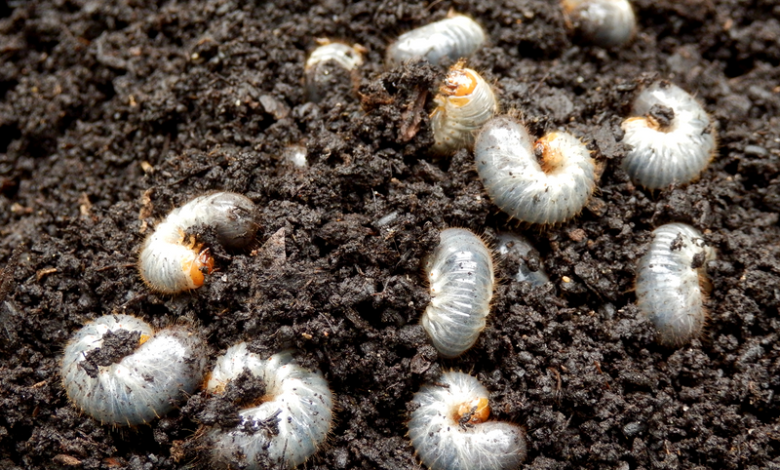
Hello agrohuerters, how are you? In today’s article, we bring out our entomologist’s magnifying glass again and, this time, we’ll look at the ground. In previous articles, we have talked about green bugs, white bugs, and how to distinguish between mite and insect. This time, our goal will be to identify the bugs in the dirt and learn how to deal with them.
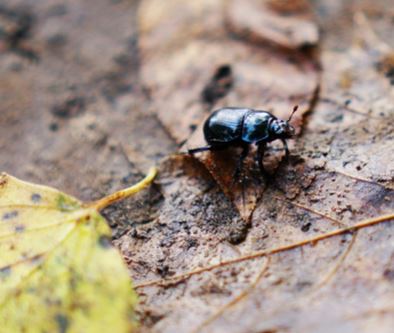
As we have said on other occasions, not all bugs in the garden are bad, there are also some beneficial ones such as ladybugs, earthworms, bees or earwigs, among others. For this reason, we must know how to distinguish one from the other and take care of those who help us in the garden.
nematodes in the soil
Roundworms, also known as nematodes or roundworms, are a species of worms that live in water and soil. They are usually so small that they cannot be seen with the naked eye. However, there are exceptions, such as Anisakis (a nematode of several centimeters that affects some marine animals).
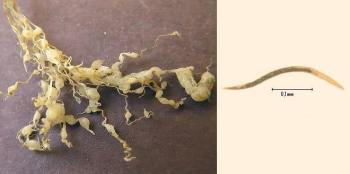
Care must be taken because nematodes are usually transmitted by irrigation water, contaminated substrates or by tools that have previously been in contact with affected areas. The larvae enter the plants through the parts that are in contact with the soil (absorbent root hairs).
Symptoms of nematodes in plants
When they are in very high concentrations, they parasitize the roots of plants, preventing the normal absorption of water and nutrients. This results in a decrease in growth, wilting and yellowing of the leaves.The clearest symptom is nodules on the roots. Therefore, if we suspect that the disease of our plants is due to nematodes, it will be enough for us to remove them from the ground and observe their roots. (Attention! We must be careful not to confuse it with root nodules in legumes).
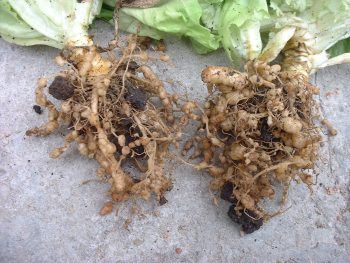
How to control nematodes?
A very useful technique to eliminate a large part of the nematode population is to put “ trap plants ”. It consists of planting crops that are susceptible to being attacked by nematodes (Convulvulis, Crotalaria, Cyperus, Portulaca, Anaranthus…). They are allowed to grow until they finish their development and when the roots are infected with nematodes they are removed and destroyed. Finally, a widely used technique to eliminate nematodes is solarization and biofumigation.
ants in the orchard
Ants are one of the most common bugs on earth, they belong to the formicid family. As you know, they live in large groups and build compartments or galleries under the surface of the ground. They feed on larvae and insects, as well as food scraps and sweets. Some species can be considered beneficial insects. However, there are others, such as black ants, which are best kept as far away as possible from our garden.

Main damages they produce in our plants:
- They are “herders of aphids”, they transport them to the shoots and protect them in exchange for collecting their honeydew.
- They can gnaw small plants with their strong jaws.
- They steal seeds from the nurseries.
I leave you a link to learn how to control black ants in the orchard.
earth pig
Also known as bug ball, pill bugs or marranitos. They are a type of crustaceans that have a rigid, segmented, calcareous exoskeleton and have seven pairs of legs.
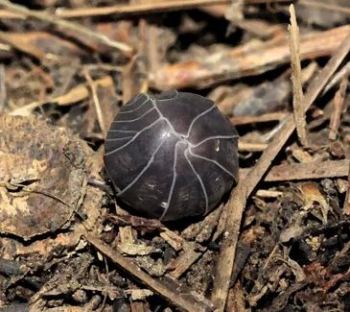
These adorable critters feed on plant and organic debris. To do this, they have a chewing mouth apparatus. Like earthworms, they can transform waste into simpler substances that are easily absorbed by the roots.
However, when they do not have decomposing remains, they usually feed on the shoots of tender plants or even bite the base of the stem. This fact means that they are considered pests during the first days of plant growth.
A form of integrated control consists of flooding the cracks where they live so that they come to the surface and be able to catch them.
Less common bugs in the dirt: Mole Cricket
This peculiar insect belongs to the Orthoptera family (grasshoppers, lobsters,…). It is also known as (onion scorpion or puppy of God). They spend most of their lives buried in the soil causing significant damage to plant roots. However, they also feed on beetle larvae so they can be beneficial if they are few.
The females dig chambers to guard the eggs and the smaller males dig galleries to make their song louder and attract females. They can be controlled by applying a mixture of water and potassium soap to the entrance hole of their galleries. In a few minutes they will come to the surface and you can hunt them.
I leave you here the photo of a Mole Cricket that I found a few months ago:
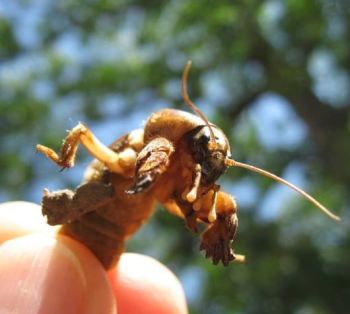
There are other bugs in the soil that are very common in the soil of our garden such as earthworms, worms or larvae. But we will talk more about these animals in the next articles.
References
- Abrol, D., Shankar, U. (2016). Chapter 20 – Integrated Pest Management. Editor(s): Surinder Kumar Gupta. Breeding Oilseed Crops for Sustainable Production,
Academic Press. 523-549 - Asma, M., Al-Assas, K., Dawabah, A. (2016).Prevalence, distribution and intraspecific variation of Heterodera schachtii populations from semiarid environment. Saudi Journal of Biological Sciences, 23(2), 293-299.
- Esbjerg, P., Sigsgaard, L. (2014).Phenology and pest status of Agrotis segetum in a changing climate. Crop Protection, 62, 64-71.
Leave us your experiences in the comments and possible ideas for the following articles.
Have a nice day

![Photo of Forsythia: [Planting, Care, Irrigation, Substrate, Pests and Diseases]](https://www.complete-gardening.com/wp-content/uploads/2022/08/forsythia-planting-care-irrigation-substrate-pests-and-diseases-390x220.jpg)
![Photo of How to Plant Privet in your Garden: Complete Guide [Step by Step]](https://www.complete-gardening.com/wp-content/uploads/2022/08/how-to-plant-privet-in-your-garden-complete-guide-step-by-step-390x220.jpg)
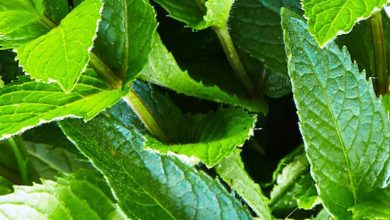
![Photo of Hyacinth Care: [Soil, Humidity, Pruning and Problems]](https://www.complete-gardening.com/wp-content/uploads/2022/08/hyacinth-care-soil-humidity-pruning-and-problems-390x220.jpg)